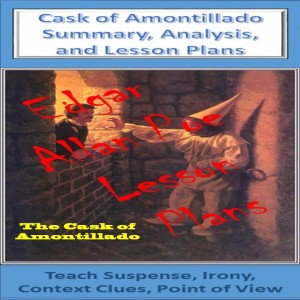Short Stories for Point of View in Literature
When the point of view changes, the story changes. Teach the importance of point of view with these short stories
Before we go any farther, here’s a quick lesson plan for teaching point of view.
ELA Common Core Standards Covered
Teaching point of view in short stories may cover the following ELA Common Core Standards. This is for your administrator, not your kids. Kids need student-friendly worded objectives.
- RL.9-10.1 Cite strong and thorough textual evidence to support analysis of what the text says explicitly as well as inferences drawn from the text.
- RL.9-10.6 Analyze a particular point of view or cultural experience reflected in a work of literature from outside the United States, drawing on a wide reading of world literature.
- RL.9-10.10 By the end of grade 9, read and comprehend literature, including stories, dramas, and poems, in the grades 9-10 text complexity band proficiently, with scaffolding as needed at the high end of the range. By the end of grade 10, read and comprehend literature, including stories, dramas, and poems, at the high end of the grades 9-10 text complexity band independently and proficiently.
Point of View in Literature Defined
We all teach that point of view is the perspective from which a story is told, but teaching mastery requires learning more than just a definition. Here are the levels of learning in regards to teaching imagery.
- Define point of view: You can teach a monkey to recite a definition. It’s simple memorization. It is necessary for mastery but does not come close to achieving it.
- Identify a story’s point of view: You’d have trouble teaching a monkey to identify the point of view in a story (unless it’s a really smart monkey). Most high school students know it when they see it. Simply identifying it, however, has no practical application outside of a classroom. It is not mastery.
- Interpret point of view: Now we’re approaching mastery. Students who can explain the author’s purpose in using a particular point of view and how the point of view relates to the overall theme of the literary work are using critical thinking skills, skills that can be applied outside of the classroom.
- Choose point of view with a purpose: Students who can use point of view to suit a specific purpose in writing or in speech have mastered the concept and are one step closer to becoming a master of words.
Short Stories for Teaching Point of View in Literature
- “Content’s of the Dead Man’s Pocket” by Jack Finney - Tom Benecke compiles a report that just may get him his big raise, but as the piece of yellow paper flies out the window and onto a ledge, Benecke must decide whether to risk his life and retrieve the paper or let it go. The reader sees the story develop from a third-person limited point of view, knowing the thoughts and actions of the story’s protagonist. Gain the perspective of another character — Tom’s wife, a passerby on the street below, his boss — by rewriting a particular passage or by conducting a mock interview.
-
After you click on the “Walter Mitty” link to the left and check out the awesome lesson plan, come back here and get the entire teacher’s guide. You’ll love it.
"The Secret Life of Walter Mitty" by James Thurber - Walter Mitty is a brow-beaten middle-aged man who dreams of so much more. Join Walter on his life-and-death adventures in James Thurber's most popular short story. Thurber employs a third-person limited point of view and entertains his readers with Mitty's daydreams. Taking a look at how his wife views the situation would be entertaining indeed.
- "The Scarlet Ibis" by James Hurst - Break out the tissues (and click on the link for more "Scarlet Ibis" lesson plans) as you read the first person account of Doodle's death from his brother. By employing first person point of view, Hurst allows the reader to identify with his narrator.
- "The Cask of Amontillado" by Edgar Allen Poe - Montresor's chilling first person account of his plan to kill Fortunato has been a high school favorite for years. Making a character chart comparing the two main characters, from both Montresor's and Fortunato's perspective
Get lesson plans, graphic organizers, answer keys, a summary, analysis, essay topics, rubrics, a quiz, and more.
makes for an interesting class discussion. It's also fun to imagine Fortunato as the first person narrator.
- "The Celebrated Jumping Frog of Calaveras County" by Mark Twain - Twain's frame story encompasses a third person account from Simon Wheeler from a first person narrator who's been the recipient of a prank. Laugh along with Twain as he takes his narrator on a labyrinthine diatribe. Discuss the elements of a frame story by creating a frame with "The narrator asks Simon Wheeler about Leonidas W. Smith." Inside the frame write "Simon Wheeler narrates the following stories"
Another Point of View on Point of View
Point of View can also refer to the cultural perspective from which a story is told. The following lesson plan on point of view can help students understand both aspects of point of view.
- Read a story.
- Instruct students to rewrite a scene from a different point of view. This different point of view can be the literary point of view or the cultural/gender point of view or both.
- This activity works well in a group setting with one person in each group writing from the perspective of a different character, an omniscient narrator, or an outsider.
- Share the same story from a different point of view with the class.
Teaching Literary Elements with Short Stories
Understanding literary elements is necessary for literary analysis. These short stories will help you teach literary elements.
- The Best American Short Stories
- Short Stories for Teaching Theme
- Short Stories for Teaching Irony
- Short Stories for Teaching Symbolism
- Short Stories for Teaching Conflict
- Short Stories for Teaching Foreshadowing
- Short Stories for Teaching Imagery
- Short Stories for Teaching Characterization
Last Updated on December 2, 2016 by Trenton Lorcher
Share This:

